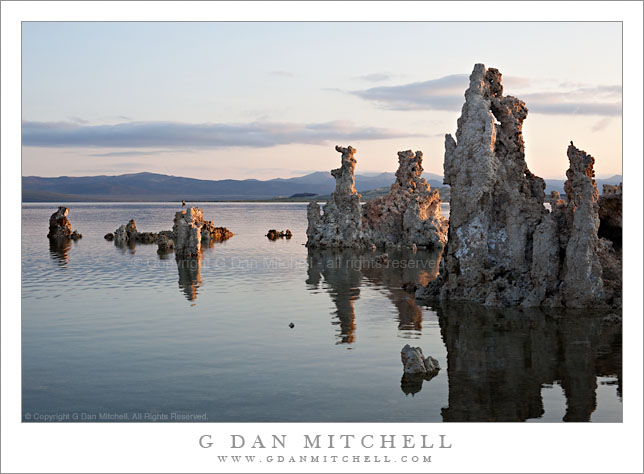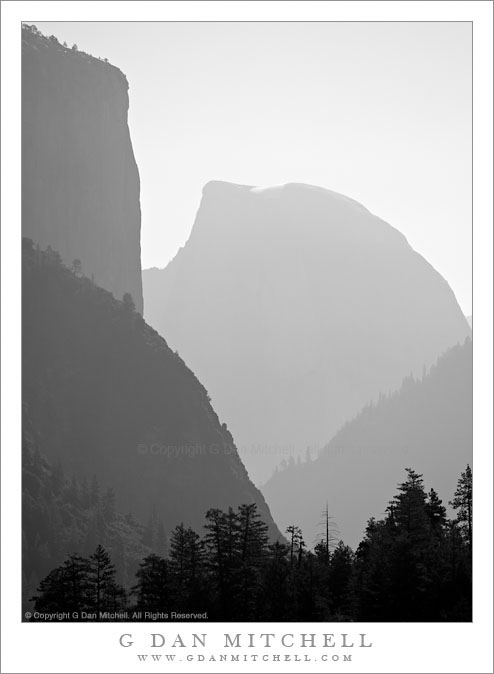Half Dome and El Capitan, Morning Light. Yosemite National Park, California. May 10, 2009. © Copyright G Dan Mitchell – all rights reserved.
The first view of Half Dome and El Capitan upon arriving at Yosemite Valley in the early morning.
Let’s think of this as a work in progress…
Almost every time I enter Yosemite Valley via the northern highway 120 route I stop at this turnout not far below the turnoff to Foresta, where the first view of Half Dome and El Capitan suddenly looms ahead. I am so familiar with this road that I know exactly when this view will appear, but it must be stunning for a first-time visitor to round this ridge and see these icons looming ahead. I pull out, park the car, fit the long lens, and see what the conditions will produce on this particular day.
I have a vision for a photograph that I’ll probably get some day from this spot, but it will take a perfect combination of light (type, angle, intensity) and atmosphere (some haze but some clarity in the scene as well) and conditions (a bit of snow somewhere, perhaps like that on the summit of Half Dome in this photo). I have a feeling that the day on which it happens will not necessarily be an otherwise stunning day – but the conditions for this shot will be right.
In the meantime this version and a companion in landscape orientation that I shot in early May will have to do. Besides the obvious iconic stuff (Half Dome in the far center and the face of El Capitan looming on the left) there are some interesting visual coincidences in this scene. Notice that the curve of the upper right ridge of Half Dome is mirrored in the curve of the foreground ridge in front of El Capitan. The concave curve on the very upper left side of Half Dome (close to the cliff next to the “cable route”) is mirrored by the dip in the foreground trees. The descending angle of the middle-distance ridge on the right side extends into the downward slanting crown of the trees at lower left.
This photograph is not in the public domain. It may not be used on websites, blogs, or in any other media without explicit advance permission from G Dan Mitchell.
G Dan Mitchell Photography
keywords: yosemite, valley, national park, half dome, el capitan, silhouette, haze, light, cliff, mountain, forest, trees, black and white, landscape, scenic, travel, california, usa, sky, snow, spring, morning, early, first, view, overlook, stock
Like this:
Like Loading...


